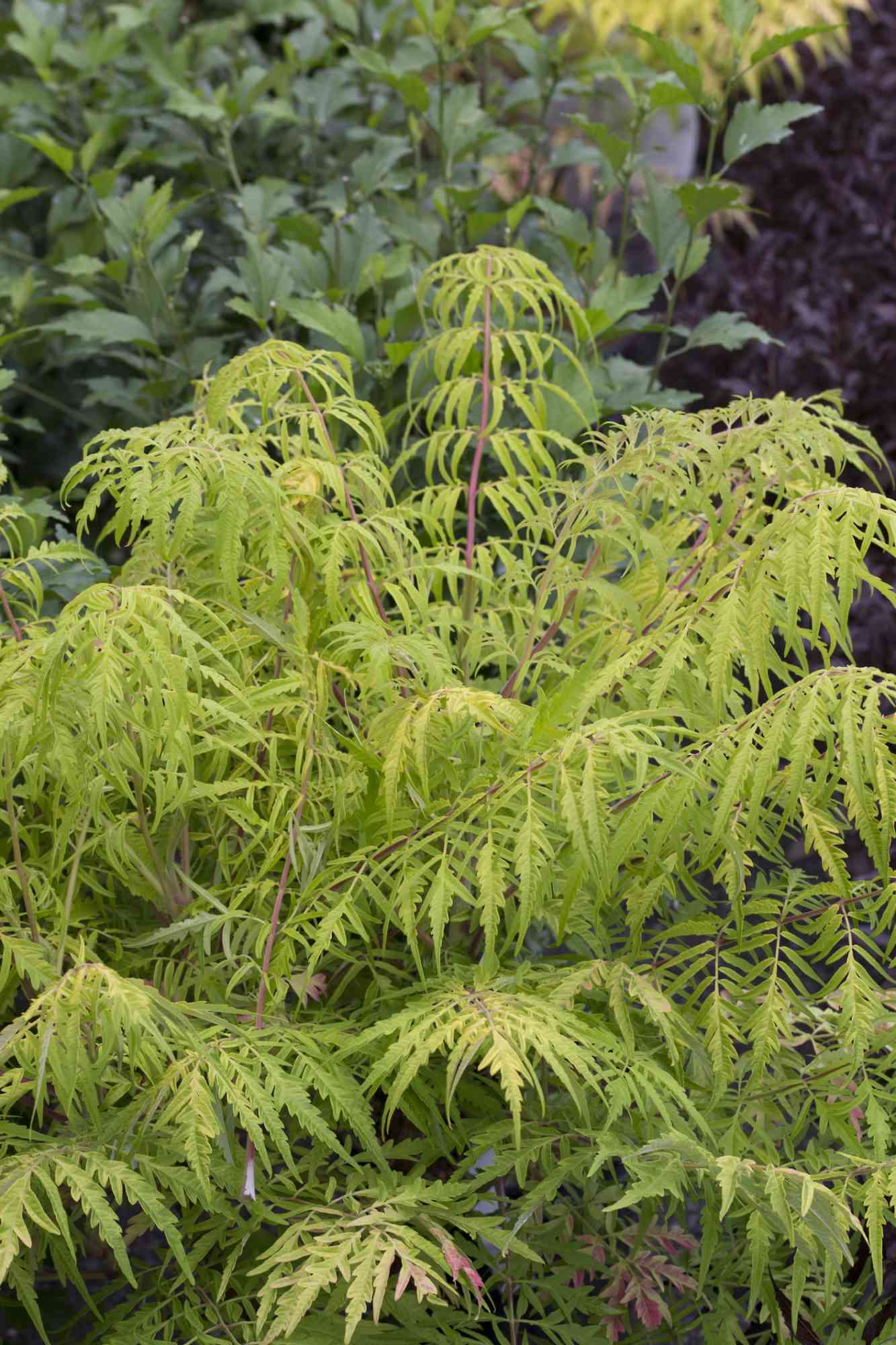Readers sometimes complain that I don’t write about enough native plants. Let me be clear – I write about good plants, whether they’re native or not. But lest native plantophiles consider me a bigot, I offer praise here for a group of native plants most of you disdain. Sumacs.
People generally consider these suckering shrubs to be weeds because they’re so easy to grow in USDA Zones 3 to 9. They tolerate almost any well-drained soil, have few pests, need little care, and thrive in sun or light shade. You often see them growing by the side of the road, on dry banks, and at the edge of the woods, where they don’t receive the slightest attention. They naturally form colonies, but I reject the notion that they are invasive. I have sumacs in my garden and whenever one sprouts where I don’t want it, I clip it off that that’s that.
Three species of sumac are widespread in the South. The one above is called shining or winged sumac (Rhus copallinum), named for its glossy, compound leaves and the wings on the stems of the leaves. It grows into a large shrub or small tree about 8 to 10 feet tall. Green leaves turn blazing red in fall – they’re truly spectacular. In addition, female plants produce drooping clusters of red berries in late summer. They feed the birds and I’ve quaffed a nice tea made from them that’s high in Vitamins A and C.
Smooth sumac (Rhus glabra) looks very similar, but it grows a bit taller. Its larger, showier berry clusters stand upright, rather than hang down. Fall foliage is just as vivid.
Staghorn sumac (Rhus typhina) is probably the most familiar species. It’s noted for its branching pattern that resembles the antlers of a deer and the fuzz that lines its branches. It grows into a small tree 15 to 25 feet tall. In summer, eight-inch, cone-shaped clusters of hairy, red fruits stand atop its large, compound leaves. In fall, the leaves turn brilliant orange, scarlet, and crimson. A much-ballyhooed selection, «Tiger Eyes,» flaunts yellow leaves in summer that turn orange and red in fall. However, this is the only sumac I can’t keep alive.

Okay, let’s tackle the elephant in the room. (Just a figure of speech, as doing so would be impossible.) Lots of people think that sumac leaves cause skin rashes, like those of poison ivy do. FALSE. The onus for that falls on an uncommon sumac lookalike, Toxicodendron vernix, that’s mainly found near swamps. Its white fruits are a dead giveaway.
Where might a sumac fit in your garden? I’ve seen it used as an ornamental tree at the corner of a house and it was quite attractive. For most people, though, a logical location is a native or naturalized section of the yard where tough plants are allowed to do their thing. Mine grows on the edge of a wooded patch beside my driveway.
Let’s put an end to the calumny, «Grumpy never writes about native plants.» I do – all the time. However, my mantra is and will remain, «Right plant in the right spot.»